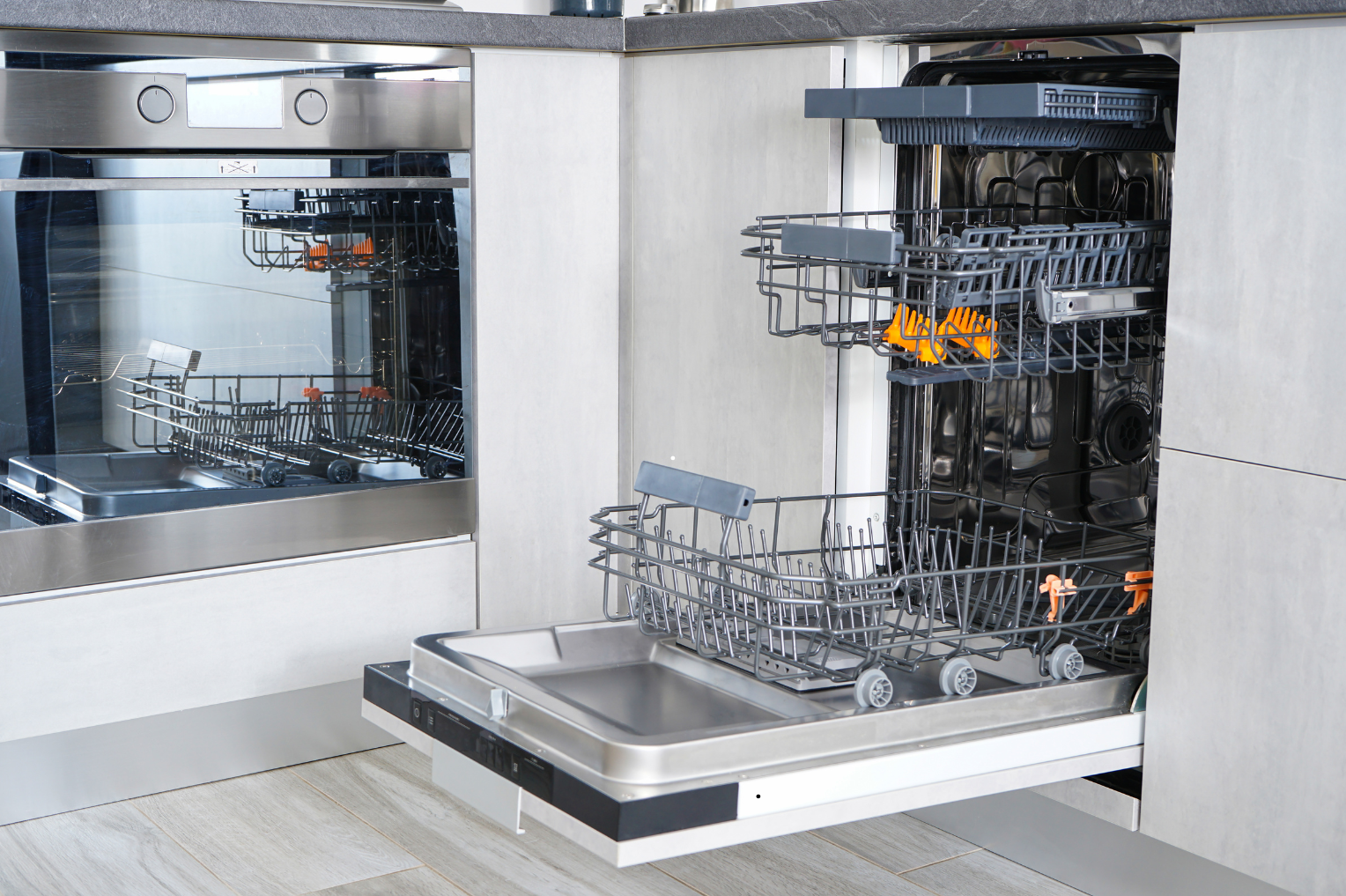How to Clean Greasy Kitchen Appliances
How to Clean Greasy Kitchen Appliances: Essential Tips for a Sparkling Kitchen in St Albert
Cleaning greasy kitchen appliances can feel like a daunting task, but it doesn't have to be. With the right techniques and tools, you can restore your appliances to a spotless shine, enhancing both their appearance and your kitchen's overall cleanliness. Regular maintenance not only improves the look of your appliances but also extends their lifespan and functionality.
Preparation plays a crucial role in the cleaning process. Gathering the right cleaning solutions and tools—such as vinegar, baking soda, and microfiber cloths—can make the job much easier. Knowing how to address specific appliances, from ovens to refrigerators, will equip you with effective strategies for tackling even the toughest grease.
Once you understand the techniques to clean various surfaces and stubborn grime, you'll be empowered to maintain a cleaner kitchen environment. This will not only enhance your cooking space but also make meal preparation more enjoyable.
Key Takeaways
- Regular cleaning improves appliance lifespan and functionality.
- Gather effective cleaning solutions for different surfaces.
- Understanding specific techniques makes cleaning efficient and easy.
The Importance of Maintaining Clean Kitchen Appliances
Keeping your kitchen appliances clean is essential for several reasons.
First, hygiene is crucial. Dirty appliances can harbor bacteria, leading to unsanitary conditions in your kitchen. This affects not only your health but also the quality of the food you prepare.
Second, regular cleaning prevents grease build-up. Grease can reduce the efficiency of your appliances, causing longer cooking times and uneven results. Maintaining cleanliness ensures even cooking and better performance.
Additionally, clean appliances can enhance safety. Grease and food residues can pose fire hazards, especially in ovens and stovetops. By cleaning these areas, you lower the risk of flare-ups.
Lastly, maintaining your kitchen appliances can extend their lifespan. Regular upkeep prevents wear and tear, saving you money on replacements in the long run.
Quick Tips for Cleaning
- Stove and Oven: Wipe down surfaces regularly to prevent grease accumulation.
- Dishwasher: Clean the filter and interior monthly to avoid unpleasant odors.
- Microwave: Use steam cleaning with a bowl of water to loosen stuck food.
By prioritizing cleanliness, you ensure a more efficient, safe, and pleasant cooking environment in your home.
Preparation for Cleaning
Before you begin cleaning greasy kitchen appliances, you need to ensure you have the right supplies and take necessary safety precautions. This preparation will make your cleaning process more effective and efficient.
Gathering Necessary Cleaning Supplies
Start by collecting all the cleaning supplies you will need. Essential items include:
- Baking soda: Acts as a gentle abrasive and deodorizer.
- Distilled white vinegar: A natural cleaner effective against grease.
- Microfiber cloths: These will help trap dirt and grime without scratching surfaces.
- Dish soap: Useful for cutting through grease when mixed with warm water.
- Scrubbing pads: For tough spots, but choose non-abrasive to prevent damage.
Take a moment to check your appliances for specific cleaning needs. For example, glass surfaces may require different care than stainless steel. Keep all supplies within arm's reach to streamline your cleaning process.
Safety Precautions and Preparations
Before starting, ensure you're working in a safe environment. Here are some key precautions to consider:
- Turn off appliances: Always unplug or switch off appliances before cleaning.
- Wear gloves: Protect your skin from harsh chemicals and hot surfaces.
- Ventilate the area: Open windows or use a fan if you're using strong cleaning products to avoid inhaling fumes.
- Check for damage: Inspect appliances for loose parts or electrical issues to avoid accidents.
Taking these precautions will not only increase your safety but also enhance the effectiveness of your cleaning efforts. Ensuring your workspace is safe will allow you to focus solely on the task at hand.
General Cleaning Techniques
When tackling greasy kitchen appliances, it’s vital to use effective methods that ensure cleanliness without damaging surfaces. Focus on both standard techniques and eco-friendly options to achieve a polished result.
The Basics of Degreasing
To start, gather your cleaning supplies, including dish soap, vinegar, and baking soda. These items are gentle yet powerful against grease. Mix equal parts of baking soda and vinegar to create a paste. Apply this mixture generously to greasy areas and let it sit for a few minutes before scrubbing.
For tougher grime, use dish soap with warm water. This combination effectively breaks down oil. A soft cloth or sponge is ideal for scrubbing, avoiding abrasive materials that can scratch surfaces. Rinse well with clean water to remove any residue.
Don’t forget to address attachments, such as knobs and handles. Remove them for a thorough cleaning in soapy water. Dry everything completely before reassembling to prevent moisture-related issues.
Eco-Friendly Cleaning Options
If you prefer green cleaning, opt for natural remedies. Vinegar stands out as an excellent grease remover. Mix it with water in a spray bottle for easy application. This solution works wonders on surfaces without harsh chemicals.
Lemon juice is another effective option. Its acidity helps break down grease while leaving a fresh scent. Combine it with baking soda for an extra boost. Apply this paste, let it sit, and then scrub gently.
Instead of commercial cleaners, use microfiber cloths for their effectiveness in capturing dirt and grime. They can be used dampened with a vinegar solution for better results. This approach is environmentally friendly and reduces chemical exposure in your kitchen.
Specific Instructions for Different Appliances
Cleaning grease from various kitchen appliances requires tailored approaches for each type. Understanding the unique cleaning needs of your stovetop, oven, and other appliances will help maintain their appearance and functionality.
Cleaning Greasy Stovetops
To clean greasy stovetops, start by removing any loose debris or food particles. Use a mixture of baking soda and water to make a paste. Apply it directly to greasy areas and let it sit for about 10 minutes.
For glass stovetops, a soft cloth or sponge is essential to prevent scratching. Afterward, wipe down with a damp cloth and a little vinegar for added shine. Avoid harsh chemical cleaners, as they can damage the surface.
Degreasing Ovens and Oven Hoods
For oven cleaning, remove racks and soak them in warm, soapy water. Spray a degreaser inside the oven and let it sit for approximately 20 minutes. Scrub with a non-abrasive sponge, focusing on tough spots.
For ovens with self-cleaning options, follow the manufacturer's instructions for using this feature. For oven hoods, a mixture of vinegar and water works well. Wipe the exterior and filters using a microfiber cloth. Regular cleaning every few weeks helps prevent buildup.
Shining Stainless Steel Surfaces
To clean stainless steel surfaces, use a gentle soap solution. Mix a few drops of dish soap with warm water. Apply with a soft cloth, wiping in the direction of the grain to avoid streaks.
For tougher stains, you can use a mixture of baking soda and water. After cleaning, rinse with a damp cloth and dry immediately. This prevents water spots and enhances shine. Avoid using steel wool or abrasive materials that could scratch the surface.
Cleansing Dishwashers from Grease Buildup
To address grease buildup in your dishwasher, start by removing any food debris from the bottom. Utilize a cup of vinegar placed on the top rack and run a hot water cycle.
For more stubborn grease, sprinkle baking soda around the bottom and run another short cycle. Be sure to clean the filter regularly to minimize grease accumulation. Wipe the exterior with soapy water for a complete clean.
Microwave Interior and Exterior Cleaning
For a simple microwave clean, fill a microwave-safe bowl with water and add lemon slices. Heat this for about five minutes on high. The steam will loosen grease and food particles, making them easy to wipe away.
For the exterior, use a soft cloth with a mild detergent. Be careful around buttons and the control panel. Regular cleaning prevents debris buildup, ensuring efficient operation and a pleasant look.
Refrigerator Coils and Handles Care
Cleaning refrigerator coils is essential for energy efficiency. Vacuum the coils at least twice a year to remove dust and fuzz. Pay special attention to the areas behind and beneath the appliance.
For handles, use a solution of soapy water or a vinegar mixture. Wipe down thoroughly to remove any greasy residue. Regular maintenance enhances both the appearance and longevity of your refrigerator.
Addressing Stubborn Grease
Stubborn grease can be frustrating to remove from kitchen appliances, but effective solutions are available. You can tackle these tough spots with simple DIY recipes or when it’s time to turn to heavy-duty cleaners.
DIY Grease Removal Recipes
Creating a homemade grease removal solution is often straightforward and effective. Here are two effective recipes:
- Baking Soda and Vinegar Paste: Mix equal parts of baking soda and white vinegar to create a paste. Apply this to the greasy areas and let it sit for a few minutes. The fizzing action helps break down the grease.
- Lemon Juice Spray: Combine equal parts of lemon juice and water in a spray bottle. The acidity in lemon juice can dissolve grease. Spray it on the affected area, let it sit for a few minutes, and then wipe with a damp cloth.
These DIY methods rely on common kitchen ingredients that are both effective and safe.
When to Use Heavy-Duty Cleaners
In cases where DIY solutions are not effective, it might be necessary to use commercial heavy-duty cleaners. These products are designed to cut through tough grease and grime, providing more aggressive cleaning options.
- Read Labels Carefully: Before using any product, check the label for compatibility with your appliance's surface.
- Use Gloves: Heavy-duty cleaners often contain strong chemicals. Wearing gloves can protect your skin from irritation.
Application Tips: Spray or apply the cleaner according to the product instructions. Let it sit for the recommended time before scrubbing gently with a sponge or cloth.
Choosing the right cleaner can depend on the severity of the grease and the type of appliance.
Cleaning Finishing Touches
After removing grease and grime from your kitchen appliances, focusing on the finishing touches will enhance their appearance and longevity. Proper polishing and implementing preventative measures can keep your appliances looking cleaner for longer.
Polishing and Detailing
To achieve a polished look on stainless steel appliances, use a microfiber cloth paired with a dedicated stainless steel cleaner. Apply the cleaner in the direction of the grain, ensuring that you cover fingerprints and smudges effectively.
For non-stainless surfaces, like painted or enamel finishes, use a gentle all-purpose cleaner. Avoid abrasive materials, as they can scratch the finish.
Important Tips:
- Always dry immediately to prevent water spots.
- Test cleaners on a small, inconspicuous area first to ensure compatibility.
This detailed approach will revive the shine of your appliances and protect their surfaces.
Preventative Measures for Future Grease Buildup
To reduce grease accumulation, consider implementing a few simple habits. Wipe down appliances regularly after cooking, especially around stovetops and microwaves, using a damp cloth.
Using a splatter guard while frying can also significantly minimize grease spread. Additionally, consider regularly cleaning the exhaust fan to prevent grease from settling on surfaces.
Routine Maintenance Steps:
- Weekly: Wipe down frequently used appliances.
- Monthly: Deep clean with a vinegar solution or baking soda paste to tackle stubborn residues.
Incorporating these practices will maintain the cleanliness of your appliances and make future cleanings easier.
Maintenance and Regular Upkeep
Maintaining your kitchen appliances is essential for their longevity and efficiency. Regular upkeep can prevent grease buildup and other issues.
Daily Cleaning Tips:
- Wipe down surfaces after each use to remove spills or stains.
- Use a damp cloth with mild soap on your stove and countertop appliances.
Weekly Tasks:
- Clean your microwave. Fill a bowl with water and lemon juice, then heat for five minutes. Wipe the interior after.
- Check for any leftover food particles in your dishwasher. Run a cleaning cycle with a dishwasher cleaner.
Monthly Maintenance:
- Inspect and clean the refrigerator coils to enhance energy efficiency.
- Polish stainless steel surfaces with a product designed for that purpose to maintain shine and prevent scratches.
Avoid Common Mistakes:
- Never use abrasive cleaners on stainless steel. They can cause scratching and dull the surface.
- Don’t forget about the areas behind and beneath appliances during your cleaning routine.
By incorporating these regular cleaning habits, you can keep your kitchen appliances looking great and functioning well.
Frequently Asked Questions
Cleaning greasy kitchen appliances can seem daunting. Here are some common questions along with effective solutions to help you tackle the problem efficiently.
What is the most effective way to remove tough oil stains in the kitchen?
For tough oil stains, a paste made from equal parts baking soda and vinegar is effective. Apply it directly to the stain and let it sit for a few minutes before scrubbing with a damp cloth.
What can dissolve baked-on grease in the kitchen?
A mixture of vinegar and baking soda can effectively dissolve baked-on grease. Alternatively, commercial degreasers specifically designed for kitchen use can also be very effective.
How can I clean grease off kitchen walls efficiently?
To clean grease from walls, use a washcloth soaked in distilled white vinegar. Apply it to the greasy area, allow it to sit for 10 to 15 minutes, then wipe off with a damp sponge for best results.
What's the best method for cleaning sticky kitchen cabinets?
Dissolving stickiness on cabinets can be done by soaking a cloth in a mixture of warm water and a few drops of dish soap. Wipe down the cabinet surfaces and then rinse with a damp cloth.
How do you tackle cleaning a greasy commercial kitchen environment?
In a commercial kitchen, start by removing loose debris. Use a high-quality degreaser and scrub brushes designed for tough surfaces. Hot water can enhance the effectiveness of many degreasers.
What's the recommended solution for cleaning grimy kitchen appliances?
For grimy kitchen appliances, a solution of equal parts vinegar and water works well. Spray it on the grime, let it sit for a few minutes, and then wipe it clean with a microfiber cloth for a streak-free finish.
You might also like
Book a Service Today
We will get back to you as soon as possible
Please try again later



